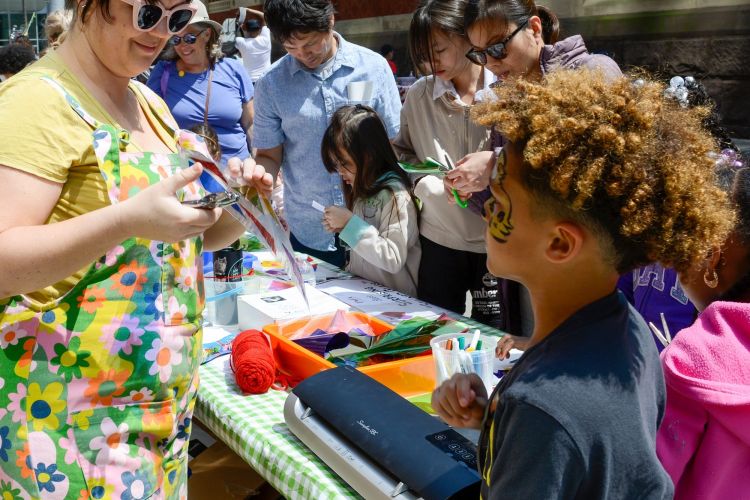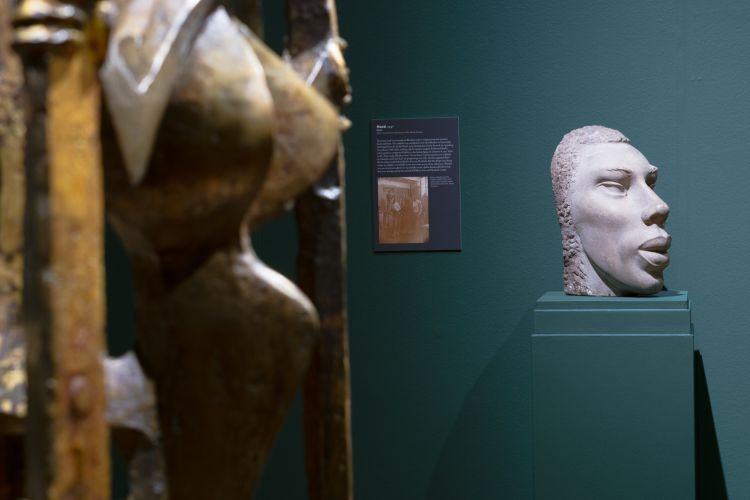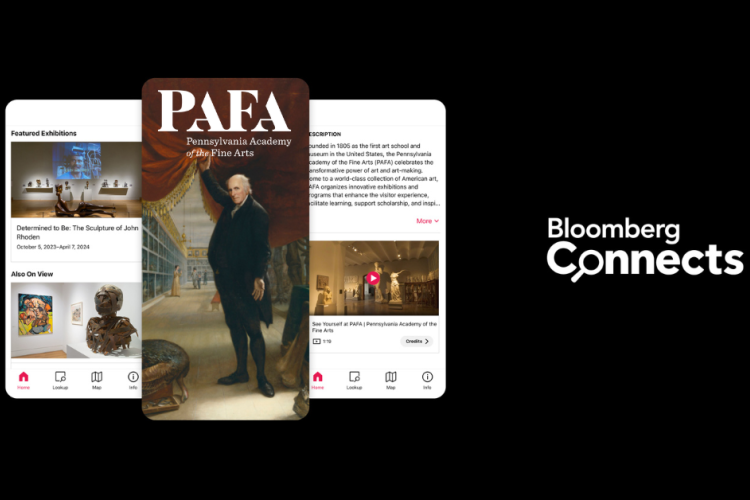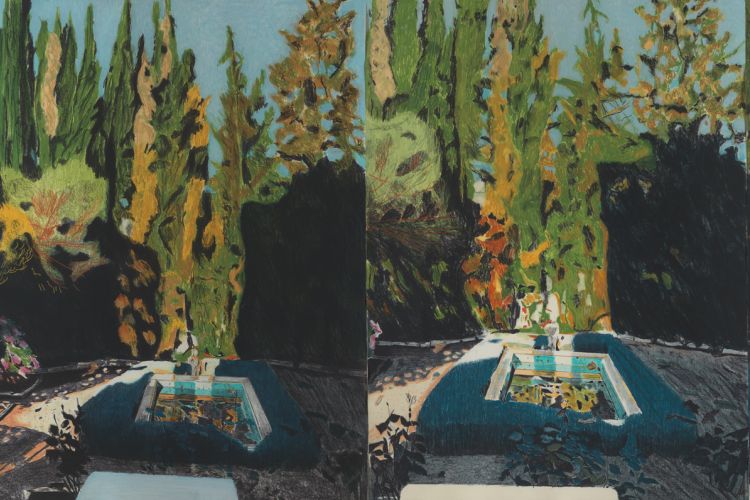PAFA Celebrates 20th Anniversary of After-School Studio Arts Program
PAFA Celebrates 20th Anniversary of After-School Studio Arts Program
Offering free honors-level art training to over 3,000 students since 1994
Reception: May 18, 3-5 p.m.
PHILADELPHIA (May 13, 2014) — The Pennsylvania Academy of the Fine Arts (PAFA) celebrates the 20th anniversary of its After-School Studio Arts Program this spring.
Since its inception in 1994, PAFA’s After-School Studio Arts Program has provided over 3,000 students (grades 9-12) from more than 50 public, charter and parochial schools in Philadelphia, as well as home school and special needs students, with access to excellent fine arts education and hands-on studio experience free of charge. The program is rooted in PAFA’s educational mission as it is committed to providing widely accessible art education and experiences to students in the Philadelphia community.
During the 2013/14 academic year, over 220 students participated in the program, many taking on multiple courses. The students will showcase and celebrate the paintings, drawings and illustrations that they created over the course of the school year during a public reception on Sunday, May 18, 3-5 p.m. on the 11th floor of PAFA’s Samuel M. V. Hamilton Building (128 N. Broad Street). The installation will remain on view through June 8, 2014.
“The program exemplifies PAFA’s core value of providing widely accessible Fine Arts education and meaningful and sustained experiences for our community,” says Al Gury, PAFA Painting Chair and long-time Director of the program. “At a time when art education is at risk in Philadelphia schools, the program supports and validates the importance of Fine Arts training in the development of high school students, while providing a supportive environment for students’ personal enrichment and achievement. For many students, the program literally makes them want to go to school. It is the highlight of the week for many.”
Over the years, the program has built an extraordinary relationship with Philadelphia teachers, students, and schools. Solidly rooted in the community, the program is meant to be a support to Philadelphia schools and teachers, rather than a replacement of art education in local schools.
Students in this model program follow an honors-level curriculum through foundation painting and drawing, as well as life drawing, and illustration courses that are offered in two 14-week semesters. Painting courses teach students the basics of color, brushwork, and composition through still life, landscape, and portrait painting. Drawing courses teach students to draw from observation, including anatomical drawing from skeletons and works in PAFA’s historic Cast Hall collection. Life drawing gives students the opportunity to draw from live models, building their skills in drawing gesture, expression, and anatomy. Illustration classes teach students techniques such as story boarding, and building a narrative through images.
Demonstrating the program’s ability to have a sustained impact on students and keep them engaged over multiple years, there has been a steady growth in participation since the program’s inception, with many students enrolling in multiple courses during the same semester.
Instructed by PAFA faculty and graduate students, the program provides a solid footing in studio art for students who otherwise have little or no access to an art program. In addition to developing artistic and personal growth, the program emphasizes technical and practical skills, like building an advanced portfolio for college applications.
Recently, an effort has been made to set more rigorous standards for the program. Each class has a set of learning goals around which students are taught a baseline of formal skills such as line, color, brushwork, and composition. The coursework also incorporates basic liberal arts skills such as art history and anatomy. While academically challenging, the guided lessons ensure all students, regardless of skill level, can be enriched and successfully learn to draw and paint. Students are evaluated and corrected on attaining specific benchmarks of the learning goals. Additionally, a conscious effort is being made to ensure coursework is cross-disciplinary. Instructors apply visual learning skills such as spatial relationships, observation, and perspective to other disciplines such as math, music, and sports.
“I am tremendously fortunate to be able to attend this program on a regular basis. Having been to numerous art institutions and colleges, none of them even remotely compare to the dedication and skill the teachers have here…I hope that the program continues for future generations because it is truly one-of-a-kind. I am forever grateful,” says Emily Siu, a senior at Masterman High School who has been participating in the program since her freshman year.
With every graduating class, anywhere from 2-6 After-School students apply to and enroll in PAFA’s Bachelor of Fine Arts or Certificate Programs. Sterling Shaw, for example, participated in the program in 1998/99, and then was accepted into the Certificate Program upon graduation. In 2000, Shaw won one of PAFA’s highly sought-after awards, the Cresson Memorial Travel Scholarship. He is currently showing his work in several prominent Philadelphia galleries. “The attitude I adopted [in the program] in regard to my artwork I took with me and applied to other things…My career path would have taken a different turn had I not attended the After-School Program, and I am grateful for the path that I'm on,” Shaw says.
2001 program graduate Sarah Hunter also enrolled in the Certificate Program following her positive experience in the After-School Program. “Being exposed to serious, professional artists drove home the point that this could be my career. Apart from the technical skills that I began to learn through the program, I also gained confidence and an enhanced sense of place…The fact that a resource of this caliber is available to the kids and future artists of Philadelphia is of invaluable importance, possibly now more than ever,” Hunter says.
For George Wylesol, the program was critical to his development as an artist, and it laid the foundation for a successful career in illustration: “The After-School Program was basically my safe haven…The supportive and encouraging environment at PAFA cemented my desire to further my art education in college, where I majored in illustration. I now proudly work as a professional illustrator, and it is absolutely no exaggeration to say that without the PAFA classes, I wouldn’t be where I am today,” Wylesol states.
For current PAFA Master of Fine Arts (MFA) students and undergraduate interns, the program offers an exceptional opportunity to experience direct, proactive teaching in a serious, skill-based environment that helps to prepare them for careers in education.
As student instructor Nancy Bea Miller (MFA ’14) explains, the program gives MFA students “a chance to learn how to teach, how to communicate a curriculum successfully, and how to manage large groups of students, all at a far more intensive level than is possible through acting as a [teaching assistant]…it feels good to know that you are part of a school that is energetically extending a helping hand to the community.”
Abigail King (MFA ’13) shares similar sentiments about teaching in the program, saying that it is “a unique experience because of the climate of mutual respect and genuine excitement about art found in each classroom. I’ve never worked with students so willing to learn. I have watched the students grow as artists at a pace that rivals any college-level class.”
The High School After-School Studio Art Program is funded in part by grants from Mary Gregg
and John Ryan; the Brook J. Lenfest Foundation; the Connelly Foundation; the Cigna Foundation, Milton and Sally Avery Arts Foundation; and the Robert Lehman Foundation.



